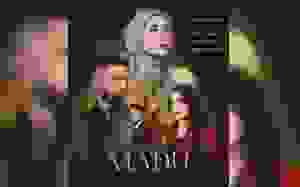How To Open Command Prompt A Step By Step Guide For Windows Users
Learn how to open the Command Prompt on your computer in a few simple steps. Master the command line interface and unleash its power!
Are you tired of navigating through multiple menus and windows just to open the Command Prompt? Look no further! In this article, we will provide you with a step-by-step guide on how to open the Command Prompt quickly and easily. Whether you're a tech-savvy user or just starting to explore the world of command-line interfaces, these instructions will help you access the Command Prompt in no time. So, let's dive in and discover the various methods you can use to launch this powerful tool!
IntroductionCommand Prompt is a powerful tool in Windows that allows users to interact with the operating system through text-based commands. It can be used to perform various tasks, from simple file operations to advanced system configurations. While there are multiple ways to open Command Prompt, this article will guide you through some of the most common methods.
Method 1: Using the Start Menu1. Click on the Start button located at the bottom left corner of your screen.
2. In the search box, type Command Prompt or cmd.
3. From the search results, click on the Command Prompt or Command Prompt (Admin) option.
4. Command Prompt will now open in a new window.
Method 2: Using Run Dialog1. Press the Windows key + R on your keyboard simultaneously.
2. The Run dialog box will appear on your screen.
3. Type cmd or cmd.exe in the text field.
4. Click on the OK button or press Enter.
5. Command Prompt will open in a new window.
Method 3: Using the Power User Menu1. Press the Windows key + X or right-click on the Start button.
2. The Power User Menu will appear on your screen.
3. From the menu, select Command Prompt or Command Prompt (Admin).
4. Command Prompt will launch in a new window.
Method 4: Using File Explorer1. Open File Explorer by pressing the Windows key + E on your keyboard.
2. In the address bar, type cmd or cmd.exe.
3. Press Enter on your keyboard.
4. Command Prompt will open in a new window.
Method 5: Using Task Manager1. Press Ctrl + Shift + Esc simultaneously to open Task Manager.
2. Click on File in the top-left corner of the Task Manager window.
3. From the drop-down menu, select Run new task.
4. In the Create new task dialog box, type cmd or cmd.exe.
5. Check the box that says Create this task with administrative privileges if you want to run Command Prompt as an administrator.
6. Click on the OK button or press Enter.
7. Command Prompt will now open in a new window.
ConclusionOpening Command Prompt is essential for many Windows users, whether it's for troubleshooting, system configurations, or executing specific commands. By following the methods outlined in this article, you can easily access Command Prompt and begin utilizing its powerful features. Whether you prefer using the Start Menu, Run Dialog, Power User Menu, File Explorer, or Task Manager, you now have multiple options at your disposal to launch Command Prompt effortlessly.
Introduction: Welcome to the step-by-step guide on how to open Command Prompt.Welcome to this comprehensive guide that will walk you through various methods to open Command Prompt on your Windows computer. Command Prompt is a powerful tool that allows you to execute commands and perform tasks efficiently. Whether you are a beginner or an advanced user, this guide will provide you with easy-to-follow instructions to access Command Prompt using different techniques. Let's get started!
Step 1: Locating Command PromptTo begin, you need to locate the Command Prompt application. Follow these simple steps:
1. Open the Start menuClick on the Windows logo located in the bottom left corner of your screen to open the Start menu.
2. Search for Command PromptIn the search bar within the Start menu, type Command Prompt and wait for the results to populate.
Step 2: Opening Command PromptNow that you have located Command Prompt, it's time to open it. Here's what you need to do:
1. Click on the Command Prompt appOnce the search results are displayed, look for the Command Prompt or CMD app and click on it to open Command Prompt.
Step 3: Alternative methods to open Command PromptIn addition to the previous method, there are alternative ways to open Command Prompt. These methods can be useful if you prefer different shortcuts or want to explore different options. Follow these steps:
1. Use the Run dialog boxPress the Windows key + R on your keyboard simultaneously to open the Run dialog box.
2. Type cmd and press EnterIn the Run dialog box, type cmd and press Enter or click OK to open Command Prompt.
Step 4: Opening Command Prompt as an administratorSometimes, you may need to open Command Prompt with elevated privileges to perform certain tasks. Here's how to do it:
1. Right-click on the Command Prompt appLocate the Command Prompt or CMD app and right-click on it.
2. Select Run as administratorFrom the context menu that appears, select Run as administrator to open Command Prompt with elevated privileges.
3. Provide administrator credentials if promptedDepending on your system settings, you may be asked to provide administrator credentials to proceed.
Step 5: Pinning Command Prompt to the taskbar or Start menuIf you frequently use Command Prompt, it can be convenient to have quick access to it. Follow these steps to pin Command Prompt to the taskbar or Start menu:
1. Right-click on the Command Prompt appLocate the Command Prompt or CMD app, right-click on it, and choose either Pin to taskbar or Pin to Start.
Step 6: Opening Command Prompt from File ExplorerAn alternative method to access Command Prompt is through File Explorer. Here's what you need to do:
1. Open File ExplorerPress the Windows key + E on your keyboard or click the folder icon on your taskbar to open File Explorer.
2. Type cmd in the address barIn the address bar at the top of the File Explorer window, type cmd and press Enter to open Command Prompt.
Step 7: Using keyboard shortcuts to open Command PromptIf you prefer using keyboard shortcuts, here's how you can open Command Prompt:
1. Open the Power User MenuPress the Windows key + X on your keyboard simultaneously to open the Power User Menu.
2. Select Command Prompt from the listFrom the list of options displayed, select either Command Prompt or Command Prompt (Admin) to open Command Prompt.
Step 8: Creating a desktop shortcut for Command PromptIf you want even quicker access to Command Prompt, you can create a desktop shortcut. Follow these steps:
1. Right-click on an empty space on your desktopFind an empty area on your desktop, right-click on it, and select New from the context menu.
2. Choose ShortcutIn the submenu that appears, choose Shortcut to initiate the Create Shortcut wizard.
3. Type cmd in the location fieldIn the location field of the Create Shortcut wizard, type cmd and click Next to proceed.
4. Provide a name and finish creating the shortcutEnter a name for the shortcut and click Finish to complete the process.
5. Double-click on the shortcut to open Command PromptTo open Command Prompt, simply double-click on the shortcut you created on your desktop.
Conclusion:Congratulations! You have successfully learned various methods to open Command Prompt on your Windows computer. Now you can choose the method that suits your preference and needs the most. Whether you use the Start menu, keyboard shortcuts, File Explorer, or even create a desktop shortcut, opening Command Prompt is just a few clicks away. Enjoy the power and efficiency of Command Prompt as you execute commands and perform tasks with ease.
Opening Command Prompt is a fundamental skill that every computer user should possess. Whether you are a tech enthusiast, a programmer, or just an average user, knowing how to access the Command Prompt can be incredibly beneficial. In this article, we will discuss the step-by-step process of opening Command Prompt and explore the pros and cons of using this powerful tool.
Instructions: Click on the Start button located at the bottom-left corner of your screen. Type Command Prompt in the search bar. From the search results, click on the Command Prompt or CMD application to open it. Alternatively, you can use the keyboard shortcut by pressing the Windows key + R simultaneously, which will open the Run dialog box. Then, type cmd and press Enter. Once the Command Prompt window opens, you are ready to use its various commands and functionalities.Pros of Using Command Prompt: Advanced Control: Command Prompt allows users to have more control over their computer system compared to graphical user interfaces (GUIs). It provides access to various advanced settings and functions that may not be easily accessible through other means. Efficiency: Command Prompt enables users to perform tasks much quicker by executing commands directly. It eliminates the need for navigating through multiple menus and options, making it a preferred choice for power users and system administrators. Automation: With Command Prompt, users can create and execute scripts to automate repetitive tasks. This feature can greatly enhance productivity and save valuable time. Troubleshooting: Command Prompt is an invaluable tool when it comes to troubleshooting computer issues. It provides access to diagnostic tools and commands that can help identify and resolve problems efficiently.Cons of Using Command Prompt: Learning Curve: Command Prompt operates through text-based commands, which can be daunting for beginners. It requires learning specific syntax and commands to utilize its full potential. Potential Risks: Incorrectly executed commands in Command Prompt can have severe consequences, such as data loss or system instability. Users must exercise caution and double-check their commands before executing them. Limited Visual Feedback: Unlike GUIs, Command Prompt does not provide visual feedback by default. Users need to rely on textual outputs and error messages, which may require additional interpretation and understanding. Dependency on Commands: Command Prompt heavily relies on users' knowledge of commands. For tasks that do not have predefined commands, users may need to resort to other methods or tools.In conclusion, being able to open Command Prompt is a valuable skill that grants users access to powerful features and functionalities. However, it also comes with a learning curve and potential risks. Understanding the pros and cons of using Command Prompt can help users make informed decisions regarding its usage and leverage its capabilities effectively.
Thank you for visiting our blog and taking the time to read our article on how to open Command Prompt without a title. We hope that our instructions have been clear and helpful, allowing you to navigate the Command Prompt more efficiently. In this closing message, we would like to summarize the key steps and provide some additional tips for your convenience.
To open Command Prompt without a title on your Windows computer, simply follow these steps:
Click on the Start menu located at the bottom-left corner of your screen. Type cmd in the search bar, and a list of results will appear. Right-click on Command Prompt from the results and select Open file location. Once the file location is open, right-click on Command Prompt again and select Properties. In the Properties window, navigate to the Shortcut tab. Locate the Run dropdown menu and select Minimized. Click Apply and then OK to save the changes.By following these steps, you will be able to open Command Prompt without a title, which can be particularly useful if you prefer a clutter-free working environment or need to run multiple Command Prompt windows simultaneously.
Before we conclude, we would like to offer a couple of additional tips. Firstly, you can further customize Command Prompt by changing its font, layout, and color scheme. Simply right-click on the Command Prompt window and select Properties. Secondly, if you frequently use Command Prompt, you may consider pinning it to your taskbar or creating a desktop shortcut for quicker access.
We hope that our guide has been informative and easy to follow. Should you have any further questions or need clarification on any aspect, please feel free to leave a comment below. We value your feedback and are here to assist you. Thank you once again for visiting our blog, and we hope to see you again soon!
People also ask: How to open Command Prompt?
Here are a few methods to open Command Prompt on different operating systems:
Windows 10:
Press the Windows key + X and select Command Prompt or Command Prompt (Admin) from the menu. Press the Windows key + R, type cmd, and press Enter. Search for Command Prompt in the Start Menu and click on it. Windows 8.1:
Press the Windows key + X and select Command Prompt or Command Prompt (Admin) from the menu. Press the Windows key + R, type cmd, and press Enter. Swipe in from the right edge of the screen, tap Search, type cmd, and click on Command Prompt. Windows 7:
Click on the Start button, type cmd in the search box, and press Enter. Click on the Start button, go to All Programs, Accessories, and click on Command Prompt. Press the Windows key + R, type cmd, and press Enter. macOS:
Open the Finder, go to Applications, Utilities, and double-click on Terminal. Press Command + Space to open Spotlight Search, type Terminal, and press Enter. Linux:
Press Ctrl + Alt + T to open the Terminal. Search for Terminal in the Applications menu and click on it. By following these instructions, you can easily open the Command Prompt on your respective operating system.
Artikel ini hanyalah simpanan cache dari url asal penulis yang berkebarangkalian sudah terlalu lama atau sudah dibuang :
https://ismiqbal.blogspot.com/2023/12/how-to-open-command-prompt-step-by-step.html
 PING BABAB : Raksasa Aggregator Malaysia
PING BABAB : Raksasa Aggregator Malaysia



























